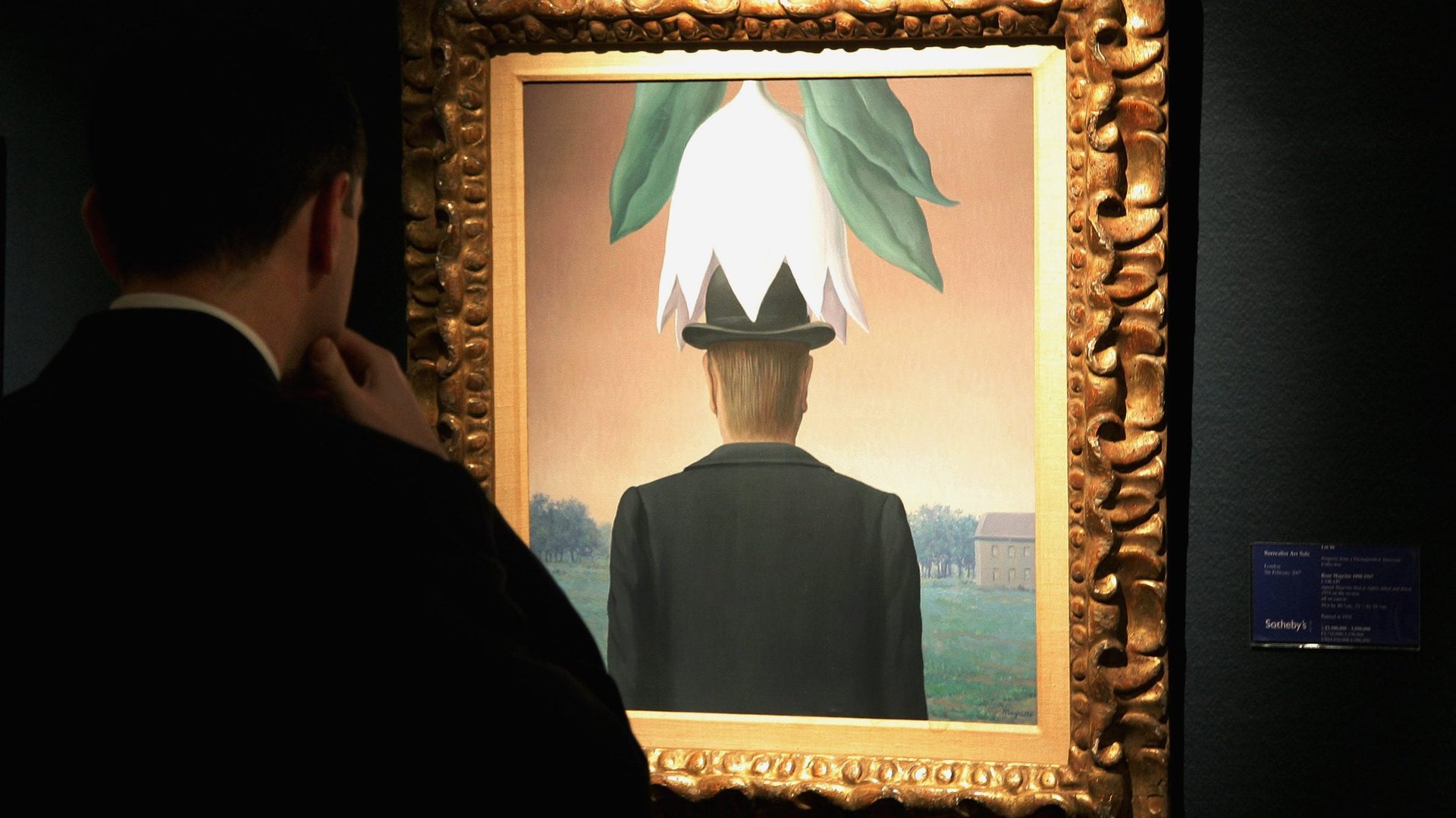Unlimited, copyright-free access to these artists and thinkers’ works arrives Jan. 1
On Jan. 1, much of the world will be getting a sack of free art and writing from famous folks with which to do whatever they wish—sell t-shirts, publish online, put on YouTube, include in movies without asking, for example. Public domain day 2018 is coming.


On Jan. 1, much of the world will be getting a sack of free art and writing from famous folks with which to do whatever they wish—sell t-shirts, publish online, put on YouTube, include in movies without asking, for example. Public domain day 2018 is coming.
Most of the world has a copyright policy that works like this: Once a new year starts, the works by people who died a certain number of years earlier (usually 50 or 70) enter the public domain. For people living in most of Asia and much of Africa, along with Canada, 2018 will bring unfettered use of works by Che Guevara, Langston Hughes, and René Magritte, who all died in 1967.
Unlimited use of Che quotes on t-shirts and posters won’t apply to most of Latin America, however, nor Europe, for an additional 20 years. And because of its convoluted and restrictive copyright policies, basically no works will become available in the US in 2018, other than unpublished works of people who died in 1947, like the American novelist Winston Churchill, not to be confused with the other Winston Churchill. In 2019, the US will receive a feast of works newly in the public domain, all at once.
In China, Japan, Canada, Bolivia, Egypt, and South Africa, copyright will be lifted for the works of:
- Che Guevara (Argentinian revolutionary)
- René Magritte (Belgian surrealist)
- Zhou Zuoren (Chinese essayist)
- Siegfried Sassoon (British poet)
- André Maurois (French writer)
Along with some legendary American writers and musicians (for whom people in the US will have to keep waiting):
- Langston Hughes (poet)
- Woody Guthrie (folk musician)
- Otis Redding (soul musician)
- John Coltrane (jazz musician)
- Alice B. Toklas (literary figure, partner of Gertrude Stein)
- Dorothy Parker (writer)
In Brazil, Argentina, Australia, Nigeria, and most of Europe, where copyright ends 70 years after a person’s death, starting Jan. 1 people can use and reproduce works by:
- Willa Cather (American writer)
- Emmuska Orczy (Hungarian-British author)
- Max Planck (German physicist)
You can see how your country’s laws hold up using Quartz’s map, based on 2015 data gathered by Wikipedia contributors and supplemented with extra research by Christopher Groskopf: